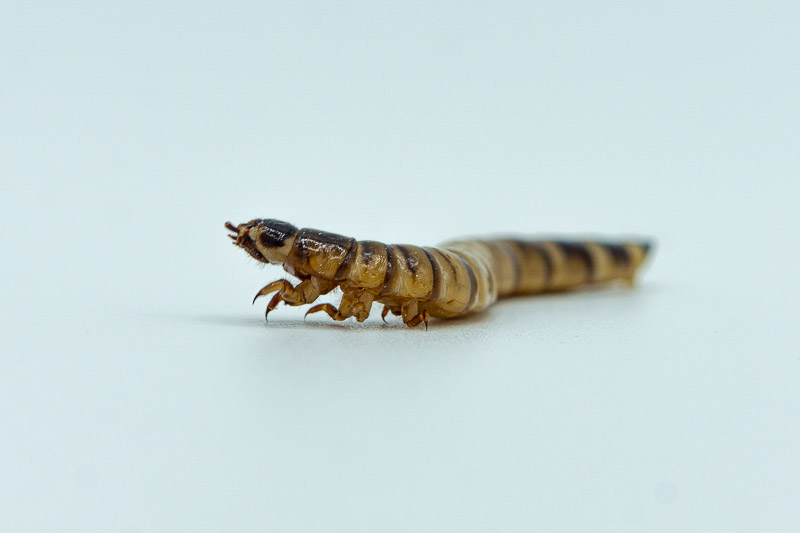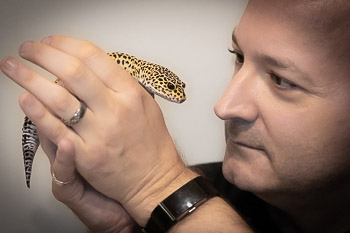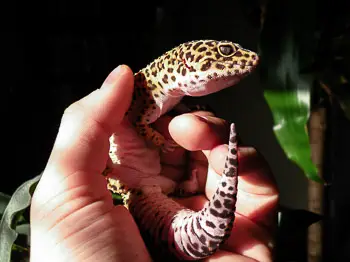If you’ve decided to add superworms to you leopard gecko’s diet, you may consider breeding superworms yourself to keep a steady supply on hand. By following along with our superworm breeding guide, you can cut down your costs and not have to worry about shortages from suppliers.
Here’s the overview for folks looking for a quick Superworm Breeding Guide. We’ll go into more detail in the article below.
- Isolate some superworms in individual containers to encourage them to pupate
- Once the pupae become beetles, place the beetles together in a breeding container
- Wait for the beetles to produce superworms
- Repeat
Also know that breeding superworms takes longer than regular mealworms. We’ll discuss the difference between mealworms and superworms, and dig into how to breed them.
Also know that breeding superworms takes longer than regular mealworms. We’ll discuss the difference between mealworms and superworms, and dig into how to breed them.
Superworms vs Mealworms
What’s the difference between superworms and mealworms? Is it just a matter of size? Are superworms able to leap a tall building in a single bound and shoot lasers from their eyes?
Though they look similar, mealworms (Tenebrio Molitor) and Superworms (Zophobas Morio) are two different species. Superworms are also commonly referred to as King Worms or Morio Worms. If you compare them to mealworms, you’ll notice the darker coloring in the head and tail of a superworm. They are also much larger than a regular mealworm. You can see the difference in the photo comparison below. On the left is the mealworm vs the superworm on the right:
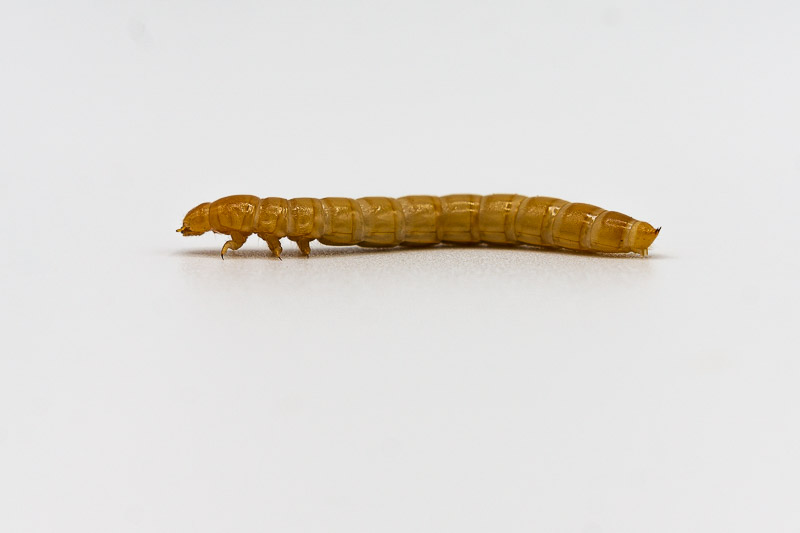

Superworms have less chitin (this is the shell or exoskeleton) and more meat than mealworms, which makes them easier for your gecko to digest. Because of their size, superworms should be fed only to adult leopard geckos.
For dietary and nutritional considerations, superworms have a higher calcium and fat content and slightly less protein than mealworms.
Superworm Life Cycle
Similar to mealworms, the “worm” is actually the larval stage of the beetle. The larvae will change to pupae, and eventually emerge as a beetle. The beetles will mate and lay eggs, the eggs hatch into larvae, and the process continues. Compared to mealworms, superworms are just a bit bigger every step of the way.



Getting Started Breeding Superworms
To start breeding your own superworm colony, you’ll need to start with some worms. You can find some superworms to start with at your local pet shop, or you can order them in bulk online.
Make sure you’re getting superworms and not “giant mealworms.” Giant mealworms are simply regular mealworms treated with hormones. Superworms and giant mealworms are often confused, and sometimes mispackaged or mislabeled. Giant mealworms are sterile, and cannot reproduce, even if they progress through their life cycle to beetles.


Unlike mealworms, superworms should not be refrigerated. Keep your feeders at room temperature. Optimal breeding temperature is about 80 degrees, but they can still be bred at slightly lower temperatures depending on your environment. (We keep ours in the same room as the furnace.) Superworms (or beetles) won’t last long once the temperature starts dipping below about 60 degrees.
You can keep the worms you plan to feed your pet in the container they came in to start. Make sure to provide a source of food/moisture such as carrot, apple, or potato slices. Carrots will often work the best, as they seem to last longer.
As for the rest of the superworms, they each get their own container.
Isolate the Superworms
If you keep the superworms stored together in a container with plentiful food, they will take much longer to pupate. You’ll need to isolate each worm in its own container or compartment. Small containers, condiment cups, empty yogurt cups, or craft or tackle boxes with small partitions will work for this purpose.

After about 2 weeks alone, the worms will decrease their activity levels and curl up, preparing to pupate. It may take them another 2 weeks or so in this state before they actually pupate. Keeping the worms in the dark will accelerate the process.
Becoming a Beetle
Just like mealworms pupae, you do not need to feed the superworm pupae. They will be largely inactive for several weeks. Keep them dark and warm and check on them every few days.
Again, like regular mealworms, the beetles will emerge from the pupae soft and white. They will turn a reddish brown color, and then black within a day or so as their exoskeleton hardens.
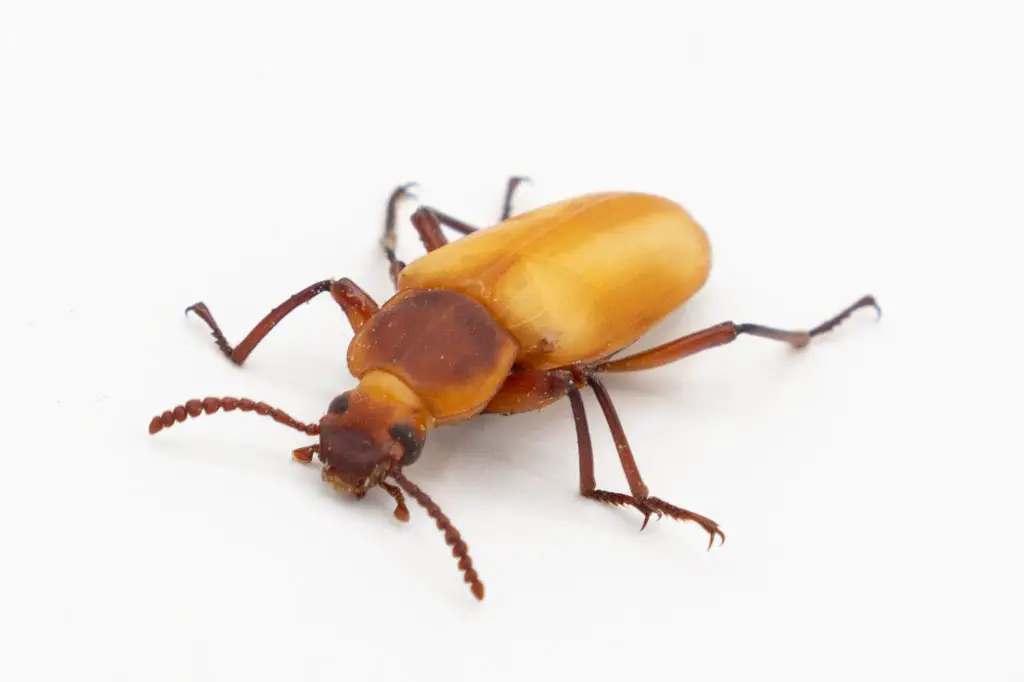

To the Breeding Bin
The next step in our superworm breeding guide is to move beetles to a breeding bin. A bin with several inches of the same substrate used for the worms is fine. Make sure the lid is secure but well ventilated, as to not let humidity build inside the container. Pieces of egg crate or paper towel tubes make a great place for beetles to hide and lay eggs.
Within a few weeks, the beetles will begin to breed and start laying eggs. A single female may lay several hundred eggs in the substrate. You’ll need to separate the beetles from the substrate and transfer them to a new container every few weeks so they do not feed on the eggs or tiny worms.
More Superworms
Worms will take several months to reach full size. Keeping the worms together and well fed will delay them pupating and allow them to grow. Superworms may live 6 months to a year, and can be fed to your pets as needed.
You can keep the worms in a well ventilated plastic bin with a few inches of bran substrate on the bottom. Again, carrots make a good source of nutrition and moisture for your worms.
Separating out a portion of the worms individually will allow them to pupate and keep the cycle going.
Wrap up: Superworm Breeding Guide
The main difference in breeding is that the larvae need to be isolated to promote pupation, and the overall process and life cycle take longer compard to breeding mealworms. Once you get your bins and space set up, the rest is mostly light maintenance and patience.
We hope you’ve found our superworm breeding guide helpful. For more information on what else your leopard gecko needs for a well rounded diet or other options for feeder insects, check out our compete leopard gecko feeding guide.

